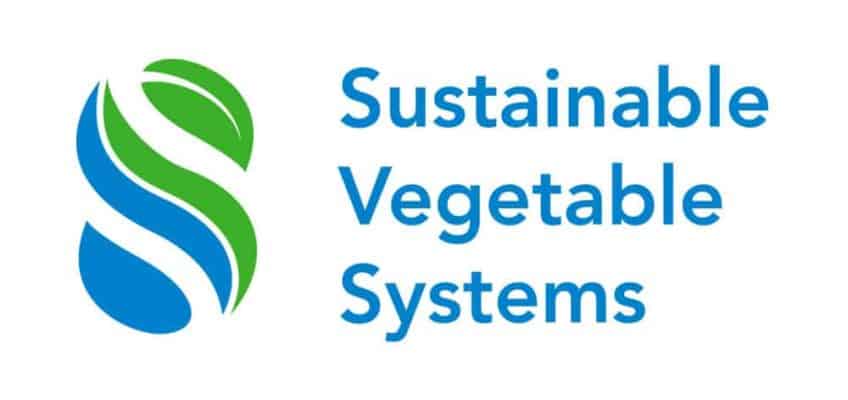Sustainable Vegetable Systems
Quarterly Report – Programme Governance Group
Quarter 1, July – September 2022
Contract Agreement Number: 21859

1.1 Summary of progress during this quarter
Workstream 1 – Controlled experimentation to quantify nitrate leaching
- Data has continued to be collected from the ‘Nui’ ryegrass seed crops in Rotation 1 and 2 sown in Lincoln and the 50:50 mix of ‘Asset’ and ‘Tama’ ryegrass sown in Hawke’s Bay Rotation 3
- ‘Casper’ cauliflower has been growing in Hawke’s Bay Rotation 4, and a plan for sequential
harvest to meet commercial standards has been developed
- Heavy rainfall in both Canterbury and Hawke’s Bay has meant that there have been several leachate samples. We have adapted N management to the heavy rainfall conditions, attempting to minimise N losses
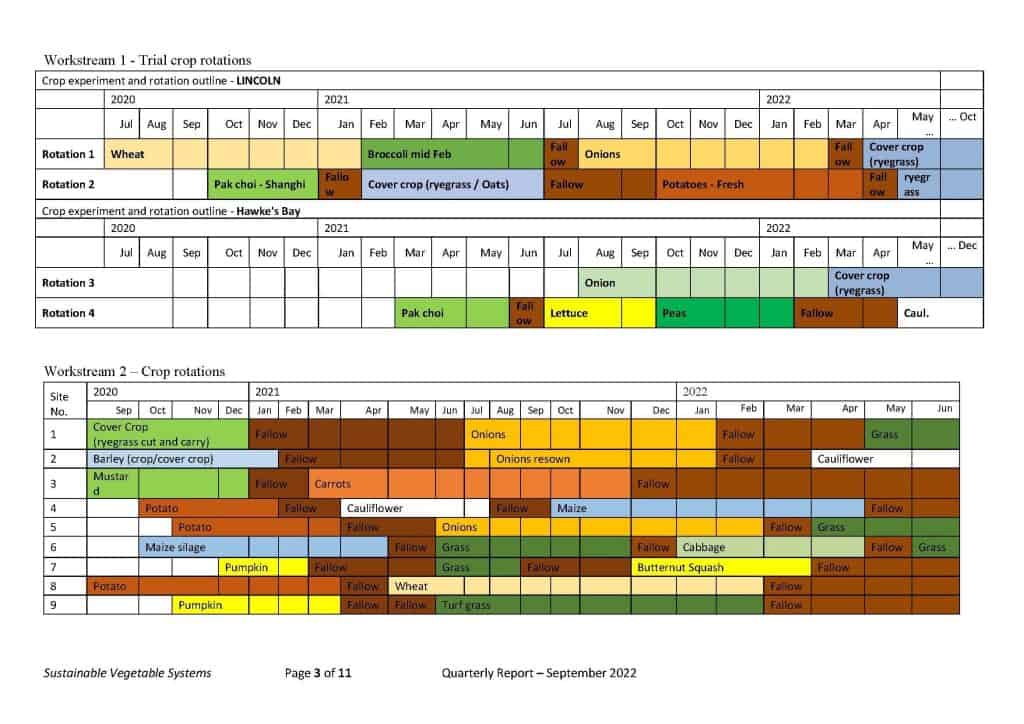
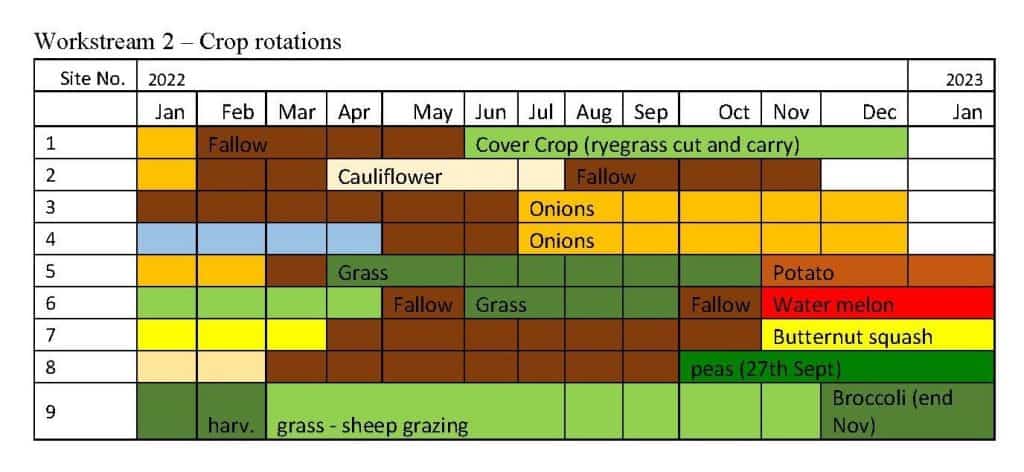
Workstream 2 – Regional on-farm monitoring
- Field sampling is ongoing. Plant sample processing by the PFR laboratory for N content analysis is in the process of being shared.
- Monitoring continues at the 9 regional sites. By the end of September 3 sites remained in fallow. However, all sites were either in crop or about to be planted. The regional monitoring sites crop rotations are shown above.
- The regional monitors meet on the last Monday of the month, along with PFR, and covers H&S, progress update, and discusses any issues and ideas amongst the nationally dispersed monitoring group.
- An additional site, winter grown potato crop in Auckland, was added as an identified crop gap. This was planted in mid-June and will be harvested in November. Soil and plant samples were taken monthly and will continue through to the postharvest fallow period in December.
Workstream 3 – Farmer facing tool(s)
- Rezare completed their tool implementation pathway review and presented the findings to the SVS Project Governance Group in August.
- Three pathways are being followed:
- 1. Open source – resulting in improved trust and transparency. A Software Development Kit (SDK) will facilitate this openness.
- 2. Standalone visual interface. Having a functioning visual tool by the project’s conclusion is an essential output. SVS will look to collaborate with Overseer around tool delivery options. This approach does not exclude others, including product groups, from developing solutions.
- 3. Application Programming Interface (API). This is an essential component of the visual interface, while also allowing third parties to use the SVS model within their own in-house systems.
- The current tool is hosted internally by PFR. Making the tool externally available has raised intellectual property issues. This includes crop growth models, and access to soil and climate data. Collaboration between SVS and Overseer may overcome some of these IP issues. This was the subject of a Special PGG meeting in October to discuss the principles for collaboration.
- The aim is to have the externally accessible version of the tool ready for limited testing from May 2023.
- Discussions have begun with an external interface developer, although progress is subject to reaching agreement with Overseer on the most expedient pathway forward.
- It has been agreed by the Workstream 4 leadership team to put more emphasis on developing case studies. As the case studies can be developed using an internal version of the SVS tool, this is seen as a way to both engage with grower champions prior to the tool’s release, while further refining the tool without the constraint of IP issues further delaying development.
- Three pathways are being followed:
Workstream 4 – Developing a change landscape
The 1st quarter saw a significant amount of dissemination work, reflected in both cash and in-kind expenditure.
- Filming & postproduction by Wanderly Media is completed as part of the Workstream 4 engagement activities. There are four videos now ready for release:
- Quick N testing – how to guide
- Project introduction and overview
- Case studies/monitor sites. Greater understanding of the nitrogen cycle
- Science story – trial sites to labs to modellers a grower’s tool
- Vegetables NZ roadshows in Pukekohe (27th July), and Chch (4th August) included SVS presentations on N-Quick Tests, N-budgeting, and the tool.
- SVS held its first Reference Group meeting on the 28th July. Seventeen attended, including SVS chairman and programme manager, 3 growers, 3 regional councils, 4 industry representatives, Overseer, 3 industry supply/services, NZGAP, and PFR. Central govt. representation was unavailable.
- Vegetables NZ held a Nitrogen Management Workshop in Nelson (11th August). The focus areas being the preparation of N-budgets liked to FEPs, N-Quick Tests, and the new hotwater soil N mineralisation test. This workshop is being used as the template to build on for a regional roadshow next year.
- Andrew Barber presented on the purpose and progress of SVS at the NZ Agronomy symposium (31st Aug.)
- The first Community of Practice workshop was held in Lincoln on the 14th September with the purpose to increase the industries confidence and expertise in vegetable nitrogen understanding and modelling. The workshop included:
- SVS overview, Workstream 2 overview, model & tool overview.
- N budgets and worked examples. Open discussion and feedback
- Agreement to develop grower case studies.
- NZ Grower articles:
- July – FEPs linking to nutrient budgeting, by Andrew Barber
- August – N soil testing, PFR – Mike Bears’ N-mineralisation article
- Logic framing of programme is complete and proving to be a useful tool for road mapping and critical pathway development, which in turn will the improve strategic outcomes of SVS.
- FOLKL has now scoped the Phase 2 focus groups with the goal of assisting in tool/prototype testing and development.
1.2 Key highlights and achievements
- The first Reference Group meeting
- The analysis by Rezare on the tool development pathway options was completed, which then formed the basis of the PGG discussions in August
- The completion of four videos, which will be progressively released prior to Christmas
- The first Community of Practice meeting, with great grower engagement and a core of first case studies
- The Nelson nitrogen workshop, which now forms the template for future roadshows. This was very practice focused, including N-budgets, N soil testing – both N-Quick test and the N mineralisation (hotwater test). The outputs linked to Farm Environment Plan requirements and consequently council rules
- Data has been collected for ryegrass crops in Rotation 1, 2 and 3
- The good management N treatment of ryegrass crops in Rotation 1 and 2 have been evaluated at each side-dressing using soil mineral N content and rates have been adjusted based on these
- Cauliflower has been managed and grown in Rotation 4. Fertiliser management was adapted to the difficult growing conditions of constant rainfall. A plan for a sequential cauliflower harvest, to meet commercial standards has been developed.
1.3 Collaboration with other programmes
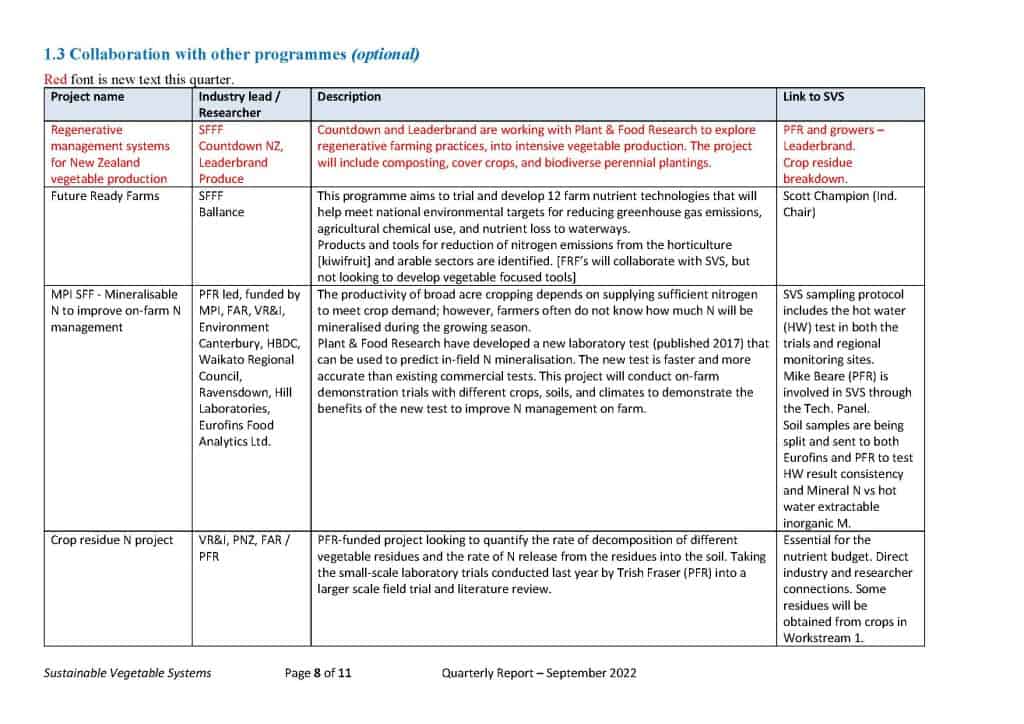
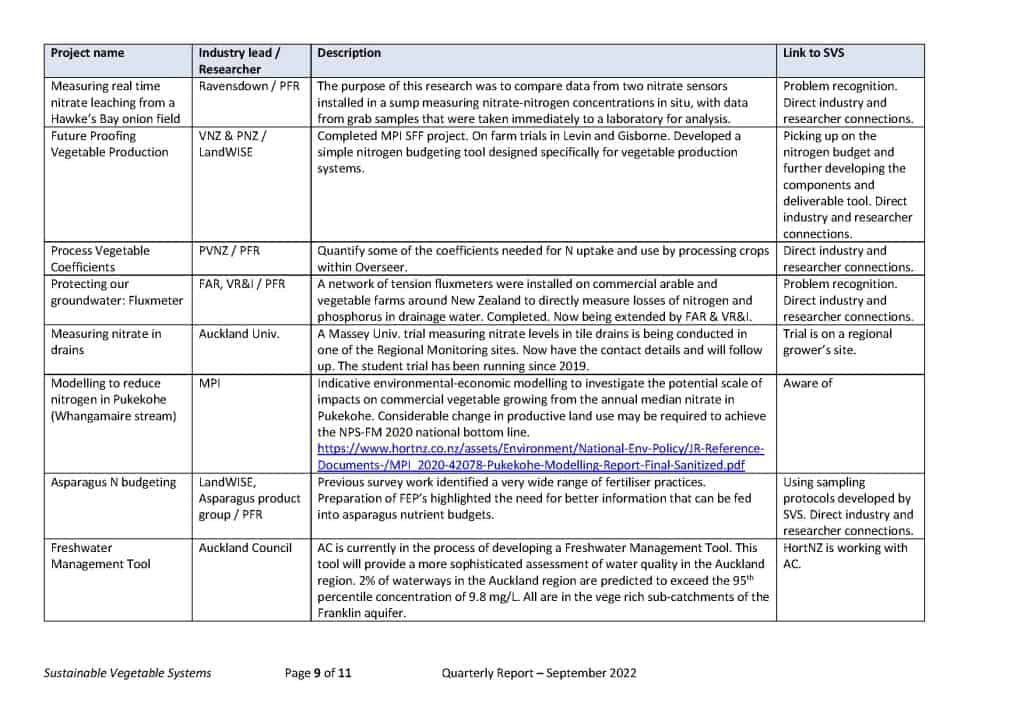
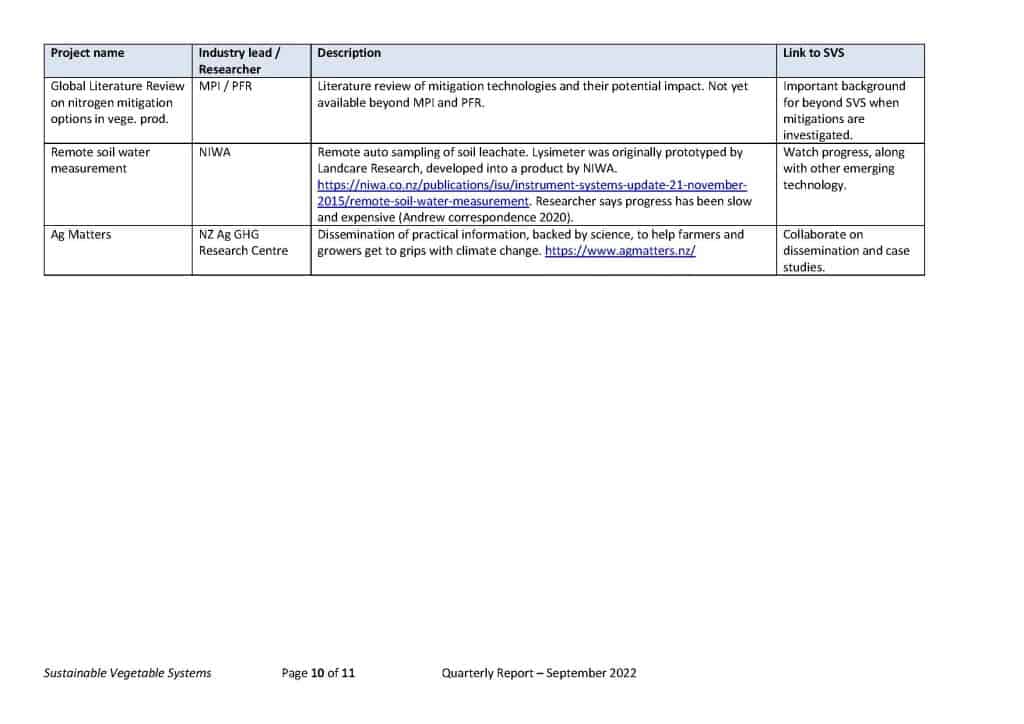
1.4 Upcoming
- Ryegrass and cauliflower harvests will be completed, together with soil sampling in Workstream 1. The final ryegrass crop in Rotation 4 is to be sown
- Progressing an in-principles agreement with Overseer for model collaboration and tool hosting
- Engaging a tool interface developer
- Development of the beta version of the tool – including what the Entry Level looks like, data requirements, what modelling it draws on, and outputs
- Statistical analysis of outcomes in individual crops and across the rotation will continue
- N balance discussions and development will be ongoing, and data from Workstream 1 and 2 further evaluated for N balance development
- Model development ongoing. Scenario testing of data ongoing
- Technical Panel+ meeting in Wellington on minimum standards for what is a N-budget and soil N testing. What does Good and Best Management Practice look like?
- Collaborating with Horizons and Waikato Regional Council on a Risk Scorecard that has N-budgets and N-testing at their heart
- Engaging with MfE on their N Risk Tool
- Workstream 4 Leaders meeting in Wellington (18th October). Roadshow planning
- NZ Grower articles. A Quarterly Update and the many sources of variability, by Andrew Barber
- Investment (Cash & In-kind)
| Investment period | Co-investor contribution | MPI contribution | Total investment |
| During this quarter | $0.168m | $0.265m | $0.433m |
| Programme to date | $1.430m | $3.3072m | $4.736m |



